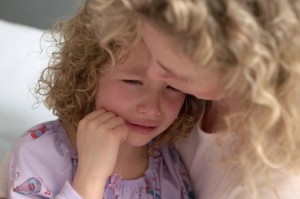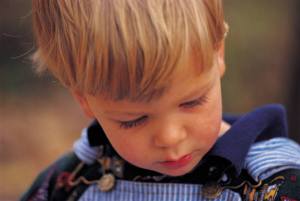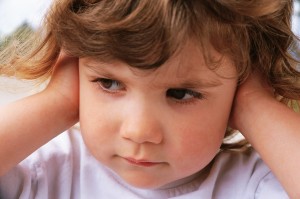 There’s no such thing as the perfect parent. We all make mistakes. We wouldn’t be human if we didn’t. We can tie ourselves up in knots trying to do the right thing, we can beat ourselves up when we know we’ve done the wrong thing. Parenting isn’t easy or straightforward.
There’s no such thing as the perfect parent. We all make mistakes. We wouldn’t be human if we didn’t. We can tie ourselves up in knots trying to do the right thing, we can beat ourselves up when we know we’ve done the wrong thing. Parenting isn’t easy or straightforward.
But here’s what I think are the most common mistakes we make. The hardest habits to shift. And awareness is the first step to change.
1. Our response to children crying
It seems that invariably, when I hear a child crying, they are accompanied by a parent who is either telling them they’re OK really, or attempting to berate and threaten them into silence. Neither is helpful. Once and for all, can we please get over kids crying? Kids will cry sometimes, sometimes a lot. It’s normal, they’re allowed to (or should be), and it’s not bad behaviour. Deal with it.
Newflash: Kids have feelings. They will at times feel sad, frustrated, angry, disappointed etc etc. It is unreasonable to expect them not to have these feelings like any human being. Further more, they are still learning how to process these feelings, and so are more likely than a mature adult to cry or have a tantrum in response to them. Allowing children to experience their feelings fully, express them, and then move on from them in their own time, allows them to learn emotional regulation. Threatening or distracting them into silence earlier, because we can’t handle the expression of feeling, short-circuits this process and does them a disservice. It also teaches them that their feelings are unacceptable or unimportant, and to simply put a lid on them, or as Dr Laura Markham puts it, stuff them in their ’emotional backpack’. This only stores up trouble for later. Cue; more tantrums.
Seeing our child crying can be upsetting, or annoying. It triggers us in different ways. But it’s our stuff. Get over it, and let them get on with it.
2. Validation
So when a child is crying, instead of distracting, or trying to fix things, we need to validate and empathise.
Lost that stick they were carrying home from the park? Instead of, “We’ll find another stick”, “It was only a stick, don’t be silly”, try, “You really liked that stick”, “You’re sad you lost your stick”. Really. A child’s not going to say, “Yes, you’re right, it’s just a silly stick, I’ll stop crying immediately”, or somehow see the error of their ways of thinking or feeling. They are quite entitled to feel sad about something even if you don’t. If you think it’s silly, bite your tongue. Naming feelings helps children to recognise and process them. Validating makes them feel like we’re on their side. All feelings are valid. As with the first point above, the goal should not be immediate silence. In any case, they’ll usually get over it quicker with a bit of validation. Trust me. And they will get over it. Patience. And validation.
3. Over-scheduling
It seems that these days it’s the done thing to have our children’s every hour spent in a scheduled, adult organised activity. The assumption seems to be that they will be learning and developing more quickly if they spend as much time as possible acquiring and practising various skills, be it sport, music, languages, whatever, as long as they’re seen to be learning.
Actually, the best thing we can give our children is time for free play. They don’t need to be told how to play, it’s just what they do. Give them time and space and it happens so easily and naturally, it’s just meant to be that way. This is how they learn. Free play, using their own ideas, imaginations and creativity, without unnecessary adult intervention, is how kids learn and develop.
Play England‘s report, “Free Play in Early Childhood” describes the benefits of free play as follows:
 “All aspects of development and learning are related in play, particularly the affective and cognitive domains. When children have time to play, their play grows in complexity and becomes more cognitively and socially demanding. Through free play children:
“All aspects of development and learning are related in play, particularly the affective and cognitive domains. When children have time to play, their play grows in complexity and becomes more cognitively and socially demanding. Through free play children:
- explore materials and discover their properties
- use their knowledge of materials to play imaginatively
- express their emotions and reveal their inner feelings
- come to terms with traumatic experiences
- maintain emotional balance, physical and mental health, and well-being
- struggle with issues such as birth and death, good and evil, and power and powerlessness
- develop a sense of who they are, their value and that of others
- learn social skills of sharing, turn-taking and negotiation
- deal with conflict and learn to negotiate
- solve problems, moving from support to independence
- develop communication and language skills
- repeat patterns that reflect their prevailing interests and concerns
- use symbols as forms of representation – the use of symbols is crucial in the development from learning through the senses to the development of abstract thought
- practise, develop and master skills across all aspects of development and learning.”
OK, enough said.
Yes, it’s nice for a child to have a few hobbies and to pursue some special interests, but let’s not go overboard, especially when they’re still young.
4. Interfering in play
I find children’s play fascinating to watch. So if there’s one thing that is guaranteed to wind me up, it’s the sight of an adult interfering with children’s play, getting overly involved, being unnecessarily directive, coming up with all the ideas; quite simply, behaving as if the children just wouldn’t know what to do without the direction of an adult. Actually, our input only takes away from all the beneficial aspects of play, so stay out of it as much as possible.
It’s their play, not ours, and they’re the experts, it’s what they do best. Let them come up with their own ideas, solutions and ways to do things.
And this includes allowing our children to take some risks. Don’t curtail their play opportunities unnecessarily. Risk needs to be part of play, part of learning, part of life. We parents need to delegate some of the risk management to our children. Because how else will they ever learn to manage it if we simply remove all obstacles from their paths and protect them from all potential danger, make all the decisions for them?
So let them climb those trees, and let them get messy. Risk assessment isn’t about eliminating risk, it’s about weighing up the risks against the benefits. The benefits of play-fighting are worth the risk of a slight bump. Children need challenge, they need opportunities, they need fun. Give them a break.
5. Failing to recognise the power of role-modelling
Lectures, nagging, prompting will only go so far. Not very far actually. Want your child to learn to be polite? Be polite. Want them to learn how to behave when they feel angry? Here’s a hint: Don’t shout. Want them to grow up being kind and considerate. Be kind and considerate. We won’t get it right all the time. Like I said, no-one’s perfect. But we really do need to keep this in mind because it’s that simple; kids learn by example. They spend a great deal of time attempting to mimic adults. Let’s harness that tendency. Be the person you want your child to be.




 Posted by Jo
Posted by Jo 











